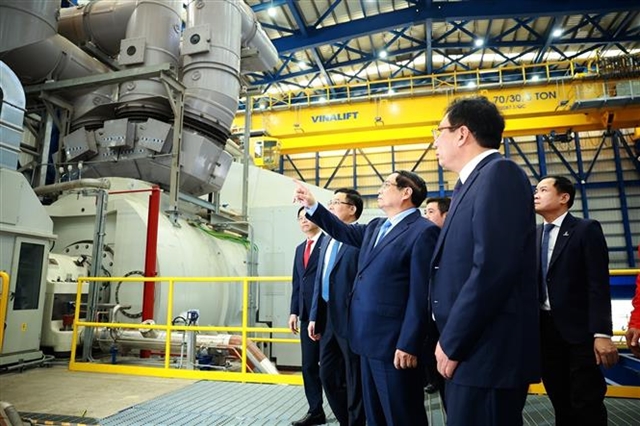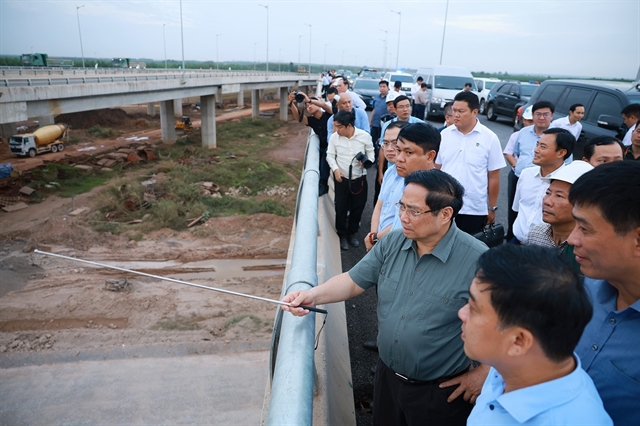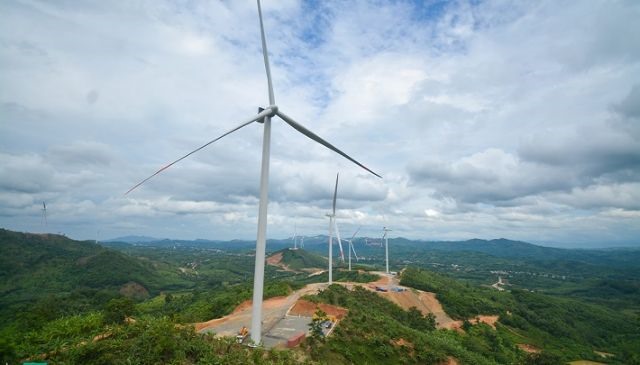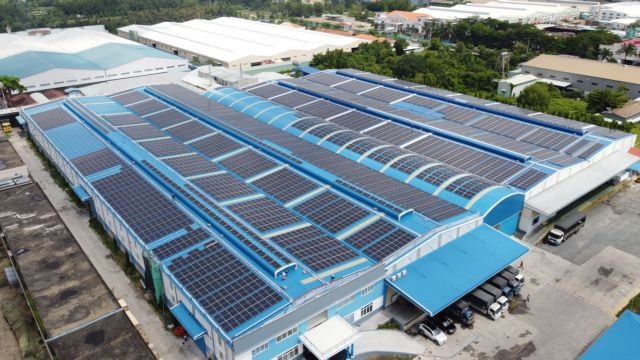 Economy
Economy


|
Built by Power Construction JSC No 1 (PCC1), Liên Lập wind farm, in the central province of Quảng Trị Province is designed to provide 48 MW to the local area. — Photo courtesy of PCC1
HÀ NỘI – The Government of Việt Nam is building open mechanisms to mobilise private investment in power projects, especially in renewable energy (RE).
According to the Ministry of Industry and Trade (MoIT), in implementing the policy of the Party and Government in encouraging and creating favourable conditions for all economic sectors in local energy development, MoIT and other ministries proposed legal frameworks to build incentive mechanisms and encourage the development of renewable energy projects.
Recently, the MoIT has submitted to the Prime Minister for approval a mechanism to sell electricity from renewable energy projects, such as wind, biomass, and waste-to-electricity and solar power, according to the Feed-in Tariff (FIT) for 20 years.
The capacity of power projects in the form of BOT and IPP, excluding wind power, solar power and small hydropower, that had been put into operation by 2020 was 7,355 MW out of a total 62,250 MW capacity of power sources, accounting for 11.8 per cent. Thermal power projects in the form of BOT and IPP are being implemented totalling 27,250 MW.
For renewable energy sources, as of December 31, 2020, there was 16,420 MW of solar power including 8,673 MW of concentrated solar power and 7,755 MW of rooftop solar, 514 MW of wind power, 382.1 MW of biomass power, 9.43 MW of waste-to-power, meaning renewable energy accounts for 25.3 per cent of the total installed capacity.
MoIT calculated electricity output from renewable energy reached 5.242 billion kWh and 10,994 billion kWh in 2019 and 2020 respectively, contributing to a significant reduction in high-priced diesel electricity.
Compared to the actual mobilised oil power data as per Vietnam Electricity's forecast, diesel electricity has decreased by 2.17 billion kWh in 2019 and 4.2 billion kWh in 2020, saving about VNĐ10.85 trillion to VNĐ21 trillion(US$471 million – $913 million).
Hoàng Tiến Dũng, director of MoIT’s Department of Electricity and Renewable Energy, said: “Renewal resources have actively supported the supply of electricity to the north of Việt Nam when it lacked power as the load increased in May and June.
“Renewal resources are contributing to ensuring electricity supply for the whole of the 2021–2025 period. Thus, it can be seen that renewable energy sources have contributed significantly to ensure electricity supply for socio-economic development and people's daily needs, reduce greenhouse gas emissions and other emissions in Việt Nam,” Dũng added.

|
Vũ Phong Energy Group install the rooftop solar system for Dong Nam Viet Packaging Company JSC in Bến Cát Town, Bình Dương Privince. The system helps This system generates 3,255,000 kWh of electricity each year, helping the plant reduce emissions of more than 2,100 tonnes of CO² every year in production. — Photo courtesy of Vũ Phong
In this case, Việt Nam is developing a mechanism to attract investors, said the director, emphasising foreign investment in BOT power projects has increased significantly in recent years, reducing capital pressure for the Government in important infrastructure projects, especially those requiring large amounts of capital and complex technology.
This makes an important contribution to the supply of electricity to the national power system, especially as State-owned corporations face difficulties in investment capital for power projects.
MoIT said the total investment capital needed to implement the selected power development programme in the 2021-2030 period was about $99.32 billion. If developed under the high-load plan, the annual investment capital requirement will be about $1.58 billion, of which about $10.16 billion was for power source investment and about $1.42 billion was for grid investment and transmission.
However, he also said some shortcomings in mechanisms and policies are barriers for some investors.
In order to attract economic sectors with conditions to participate in the development of the energy sector more actively, the ministry was studying and amending the Electricity Law to have a basis for socialisation of electricity transmission activities, in order to remove bottlenecks in energy infrastructure.
At the same time, it is studying mechanisms and policies to encourage private investment in renewable energy sources, such as directing the electricity purchase and sale mechanism, and bidding mechanism for investors.
Dũng said the implementation of this mechanism will take more time, but it will be fairer and more transparent for investors, ensuring harmony and balance between the development of renewable energy projects and the transmission grid.
At the same time, energy experts said to attract private investors for power projects, the main solution was still through price policy, adding once the electricity price policy was appropriate, investors in the electricity industry can ensure reasonable profits, and power projects will be attractive enough for domestic and foreign investment, as well as the public and private sectors.
In box
On October 14, Prime Minister Phạm Minh Chính confirmed Việt Nam was extremely keen to develop renewable energy sources at the 4th International Forum "Russian Energy Week" held in Moscow.
As Việt Nam has the leading economic growth rate in ASEAN but is strongly affected by climate change, it is well aware of the importance of increasing the proportion of renewable energy associated with economical, efficient and sustainable use of energy.
Việt Nam is developing a national electricity development plan for the 2021-2030 period, with a vision to 2045, with three major orientations.
Việt Nam aims to promote the diversification of energy sources, focusing on developing clean and renewable energy sources. To achieve these goals, the country has issued many mechanisms to encourage the development of wind power, biomass power, electricity from solid waste and solar power. VNS




